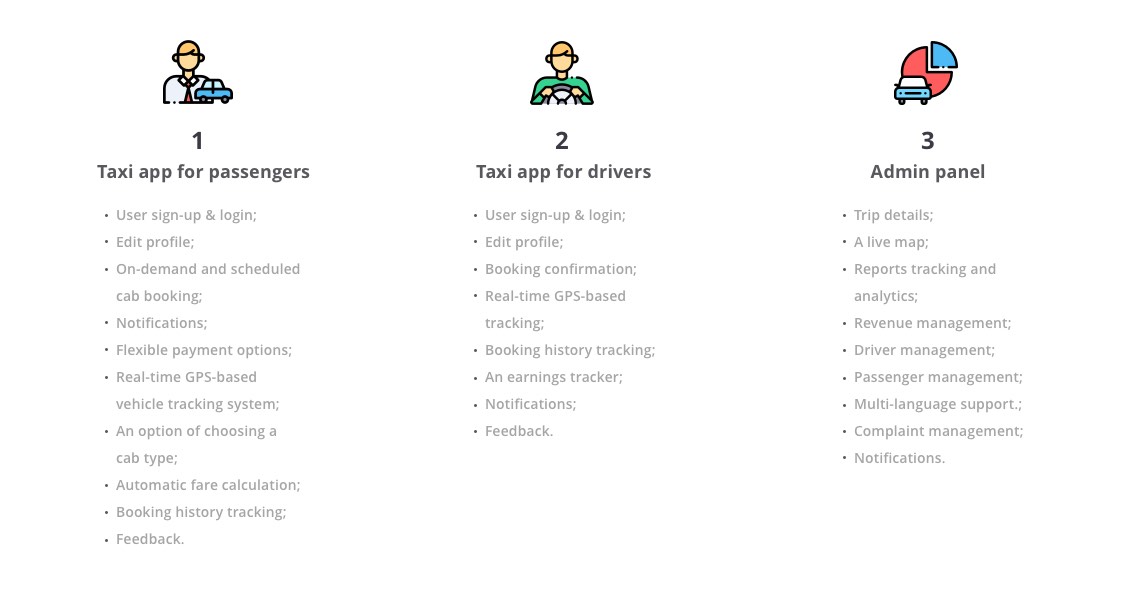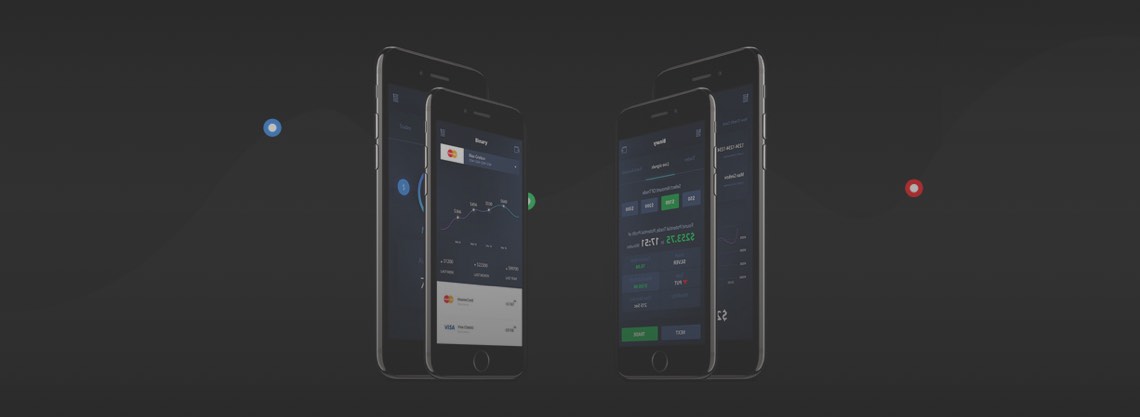As is the case with any service that is delivered on demand, a growing number of taxi companies are readily incurring semi-variable costs to gladly gain access to the app market with their progressive taxi app development solutions. The wide adoption of on-demand transportation services is one of those numerous changes the advancement of information and communication technologies entails. Thus, it is Transportation Network Companies (TNCs) like Uber and Lyft that offer new mobility options promoting safety, equity and compliance with the high quality of app-based ride services and various for-hire transportation services. These examples not only inspire but also raise the question as to how much it costs to develop a taxi booking app.
So, no wonder that TNCs appeared to dominate the for-hire sector in urban areas where customers by the year 2019 rely more on their smartphones than on traditional taxi services. This trend is unlikely to undergo a 180-degree turn. It means that a number of startups inspired by the successes of taxi booking apps like Uber is also expected to grow. What helps entrepreneurs stand out from this crowd is the familiarity with the nuances of the industry and the deep understanding of how mobile applications of this kind are being developed and work.
How do taxi apps work?
Taxi booking mobile apps like Lyft, Uber, Hailo or Gett are programs designed to match passengers and service providers. The latter are drivers of non-commercial vehicles that come into contact with the former via an online taxi app. Meanwhile, Android and iOS applications are intended to offer and do offer on-demand transportation options. Either ride-hailing or ride-sharing, the service can be app-based and web-based.
Therefore, it is e-hail app companies that help solve the problem of not being able to find a cab when one is needed. As a result, they contribute to the overall improvement. This betterment refers to smartphone businesses that make money by serving established taxi fleets with a view to replacing an outdated phone-based dispatch system.
With a ride-hailing app like Uber, one need not fear to find oneself in a difficult situation implying that late-night journeys, flexible suburban services or transit for riders with disabilities are needed. In order to use the services taxi apps offer, passengers should request a cab from an application. They download an app, open it, create an account, enter their current location and destination. Then, this request is directed to the drivers nearby. When one of them confirms a ride, a passenger receives information about this driver and his/her vehicle. Also from now on, a fare can see the driver’s location on the map and the arrival time. Once a ride is over, either it is paid for in cash or the client’s account is charged automatically if he/she has added their credit card or payment method to their account. The last step is optional — upon each ride, a passenger may be encouraged to rate the trip. So, it is more or less clear how an app works. Yet, we should discuss in more detail what parts an app like Uber must consist of to later on find out how to build one.
A taxi booking application will probably comprise three ingredients: (1) an app for passengers, (2) an app for drivers, and (3) an admin panel. Each one is associated with a unique set of features.
1. Taxi app for passengers
- User sign-up & login. In most cases, creating a user profile is a must.
- Edit profile.
- On-demand and scheduled cab booking.
- Notifications. It is desirable that they can be received in several ways: via email and SMS, as in-app messages or push notifications.
- Flexible payment options. It is important for a service provider to let customers have choices to make. When they can choose and change the method of payment at any time (e.g. cash, credit cards, mobile payment), they are more likely to feel secure and confident using your app.
- Real-time GPS-based vehicle tracking system. It lets users know the location of the car while waiting for a driver and during the ride itself.
- An option of choosing a cab type. To satisfy the needs of a larger audience, an app has to allow selecting from different fare levels for multiple user classes.
- Automatic fare calculation. When deciding on a cab type, a passenger needs to have all the price options automatically calculated.
- Booking history tracking.
- Feedback. Rating their rides, passengers signal to other app users how good their driver was.
2. Taxi app for drivers
- User sign-up & login. For drivers, the procedure is somewhat more difficult. They must be approved by the admin to start delivering their services.
- Edit profile. Users should have an option of updating a phone number and an email address, updating and add new vehicles or upload new pictures of their current motor vehicle.
- Booking confirmation.
- Real-time GPS-based tracking. With this feature right on an app, drivers can check the fare’s location while also being guided to get the shortest and fastest route possible.
- Booking history tracking.
- An earnings tracker. Driver’s daily and weekly progress summaries (a number of trips completed and earnings per each) should be easily accessed on a corresponding page.
- Notifications. Getting messages, drivers stay up to date, be it new earning opportunities, new features, information about an account or a ride.
- Feedback. A two-way rating system is not yet commonly used but, whenever practiced, it contributes to both drivers’ and customers’ safety.

3. Admin panel
- Trip details. An admin needs to access exhaustive information about active, completed, and booked rides.
- A live map. It will let an admin track vehicles’, drivers’, and passengers’ locations.
- Reports tracking and analytics. Charts with real-time updates of drivers’ activity, revenue are as relevant as information on active trips, canceled trips, and requests to reject the ride.
- Revenue management. An admin job here is to control transactions.
- Driver management. First of all, an admin approves new drivers, so their documents and basic personal information must be visible on a corresponding page of a panel. Besides, admins are responsible for deactivation and blocking drivers.
- Passenger management. Being able to view and update user details through the admin panel directly guarantees that the user experience will get improved.
- Multi-language support.
- Complaint management. If the review and rate left by a passenger communicate his or her dissatisfaction by their driver or trip, an admin should settle an issue.
- Notifications. To send notifications to drivers and passengers or change the default settings by choosing a preferable way of having them sent, administrators should go to the admin panel.
Taxi app development process and technology stack
1. Native Development (Android and iOS)
The aim of the tertiary industry and on-demand services in particular is to satisfy the needs of as many consumers as possible. When it comes to taxi booking mobile apps, businesses should consider the possibility of developing an application for both Android and iOS users. Moreover, not only passengers but also drivers will use this product. So, it is to the business’ interest to attract a fair number of service providers and customers by offering them an app running equally well on different operating systems.
As a reminder, you can check out our article that explains the key differences between Android and iOS mobile development to make certain that these are two independent processes, to say nothing of how much time and effort it usually takes to build native apps for drivers and passengers separately. Still, companies are bound to benefit from making a native app for each OS. Native apps provide faster performance, greater security and responsiveness.
The two tech stacks needed to come up with cab booking app solutions are the following:
- Android: Java & Kotlin (Programming Language), Android Studio (IDE)
- iOS: Swift & Objective C (Programming Language), Xcode (IDE)
The topic of real-time GPS-based tracking should also be touched on here. This feature implies the use of APIs and frameworks:
- OpenStreetMap API for Android and iOS
- Google Maps and Google Location Services APIs for Android
- MapKit and CoreLocation frameworks for iOS
2. UX/UI Design
By building quality native apps for Android and iOS, businesses improve their chances of finding and reaching their target audience. Still, reaching does not mean giving reasons to stay. Flawless user experience and visually pleasing user interface do. Creating wireframes, mockups and clickable prototypes that look and function like real applications will help test earlier versions step by step refining the one that is to be introduced officially to users.
3. Backend Development
Chances are volumes of produced and used data will be immense, which directly addresses the issue of the efficient data organization and management. The taxi management software (back-end) is at the core of a so-called data-management process. Consequently, a back-end of a taxi app should offer a connection to data sources and to reservation data, a connection with payment services and various communication means. Providing standardized information interface, back-end systems harmonize disparate data and link it to drivers’ and passengers’ user interfaces. Processing this data can pose a serious challenge since it is retrieved from several sources and is sometimes changing rapidly in real time. These are some instances of technologies presumably taken advantage of when working on an app backend:
- Databases: MySQL, PostgreSQL, Cassandra, Riak, Schemaless
- Languages: Python, Node.js, Java
4. Web Development
Primarily, web development is needed to build a web-based admin panel. This panel enables an administrator to manage all the processes that occur on the apps for drivers and passengers. The administrator has continuous access to the admin panel which lets him or her enjoy full privileges and gives permissions to manage registered users. When creating an admin panel as a web app, a software engineer can use Python and its open-source web framework, Django.
5. Testing and Quality Assurance
To make sure that the delivery of services is without faults, software testing is required. One has to organize testing and quality assurance activities wisely. When a QA team is in close cooperation with developers, UX/UI designers, project managers, and customer support team members, trust is being built, which increases the chances of success.
Changes, like adding new features or transforming present ones, must be testable and tested. Upon discovering problems that are to be solved, one needs to prioritize them. For instance, things connected with completing a ride, those hindering drivers from doing their job well or raising difficulties in calculating fares correctly are the top priority. Also, doing some automation increases stability, especially when scaling up. The same goes for testing. Ensuring that unexpected failures are fixed as quickly and efficiently as possible is at the core of providing a truly good user experience on a taxi booking app.
6. Project Management
While we are on the subject of how to create an app like Uber, we cannot but remind you that everything should be in its proper place at the proper time regardless of what type of application you are building. This order does not appear from anywhere. It is the output, a result of much planning by a project management team. Future of the project is determined by the past decisions these people make. At the very beginning, they have to come up with a plan clarifying all the what’s and how’s. Later on, who’s and when’s are defined.
- What’s: objectives of taxi app development, an anticipated sales volume and market share.
- How’s: a technology stack, technical and production skills, a process of reaching a target market (passengers and drivers), compliance with standards and regulations (e.g. taxi driver licensing.)
- Who’s: human resources management.
- When’s: delivery times and reporting.

7. Technical Support
As is the case for the tertiary industry, there are almost always customers who have problems with a service or a product, which is, in this context, an application helping provide the service. In the natural course of events, companies that render this service should also offer technical support. Support forums, online chats, telephone calls, and email are the main means for customers to deliver their feedback. So, users are free to communicate what problems they have with the software and technical support personnel is right here to gather information about problems, analyze them, find solutions to basic technical problems or develop new ones to rather complex issues emerged.
How long does it take to develop a taxi app?
Companies in the for-hire transportation space are very much alike. Although they are still different in what technologies they employ to stand out in the market, there is a set of basic features and activities that make a simple taxi app development solution for iOS and Android:
- Native Development (Android, iOS)
- User registration, a login page, user profiles: 130 hours
- Notifications: 50 hours
- Cab booking: 70-90 hours
- GPS-based vehicle tracking: 40-50 hours
- Payment integration: 100-120 hours
- Fare calculation: 15-20 hours
- Booking history: 40 hours
- UX/UI Design: 180-200 hours
- Backend Development: up to 200 hours
- Web Development (an admin panel): 170 hours
- Testing and Quality Assurance: a third of the total time spent on app development
Summing up, the whole process of developing a passenger app and a driver app for iOS and Android, building a web-based admin panel and a backend together with implementing a QA process might take up to 1000 hours.
How much does a taxi app development solution cost?
Building an independent brand is time-consuming. That is why ideally one should consider white labeling before establishing one’s positioning in the for-hire transportation field.
Starting with a software white label, a company that has little or no experience but is ambitious to build an independent brand in the future (like Hailo, Uber, Lyft, or Gett did) is likely to get the best of the bargain. It will prevent one from reinventing the wheel, slowing down one’s time to market, and spending too much. What is more, it is the manufacturer’s job then to ensure that the project is cost-effective. Supposing that a white label solution is the most basic and quick version a client can get, its price will also be the lowest reaching up to $10,000. Even with this simple version, users of an application may have their needs satisfied.
Yet, it is inevitable that the company wants to extend its functionality. This extension will entail the growth of spendings on new advanced features development and technical support of software. In such a case, the client should be ready to spend up to $25,000. However, this is not the greatest expense one can go to. The total price may be as big as $100,000. Whom one hires for product development, timelines, and project complexity are factors affecting the total cost.
Is it a right way to outsource development of a taxi mobile app?
Personnel the company hires is one of the factors that influence price formation most. No matter whether an entrepreneur who wants his or her idea to turn into an appealing product is technically minded or not, outsourcing seems to have its lucrative prospects anyway. The reason is that the company whom the project is handed in is fully responsible for delivering a finished product.
An entrepreneur who hands a project over to a software development company makes the right decision if he or she does the following:
- Understands the development process or has a technical expert as a co-founder.
- Hires skilled software engineers.
- Ensures that a system of checks and balances is in place.
Global software development rates
The location of the development team is not the only thing that affects the overall expenses required to make an app like Uber. The duration of engagement, team size, their experience, and tech stack are equally important. Nevertheless, the truth is that the closer the team is to the United States or Western Europe, the more expensive their engagement will be. An entrepreneur may expect to be charged twice as much for the software engineering services delivered by a team from the USA or the United Kingdom compared to the outsourced development. Thus, a software engineer in the UK may on average charge $100 hourly while an hourly rate of a developer in the U.S. may be as high as $80-200.
- Africa: $20-50 per hour
- Egypt
- Kenia
- Nigeria
- Morocco
- Asia: $15-25 per hour
- India
- China
- Vietnam
- Pakistan
- The Philippines, etc.
- Eastern Europe: $15-50 per hour
- Ukraine
- Russia
- Belarus
- Poland
- Czech Republic, etc.
- Latin America: $15-25 per hour
- Argentina
- Brazil
- Chile
- Mexico
- Costa Rica

Taxi app development cost
Relying on our estimates of time required for each step of software development let’s calculate an approximate cost of Android and iOS app creation taking an average hourly rate for the outsourced development of $30:
| iOS | Android | |
| Native Development | $13,500 | $15,000 |
| UX/UI Design | $5,400 | $6,000 |
| Backend Development | $6,000 | $6,000 |
| Web Development (an admin panel) | $5,100 | |
| Testing and Quality Assurance | $8,900 | $9,800 |
| Project Management (10-15% of the total budget) | $3,890 | $4,190 |
| Total | $46,980 | $49,980 |
These estimates are still quite rough and always have to be negotiated and agreed between a client and a contractor.
Conclusion
The intention to enter a market of on-demand transportation with a mobile application that hails taxi cabs and the desire to build one’s own market share there are no doubt ambitious and challenging. They require thorough market research that can help you determine an approximate taxi app development cost, your target audience and test your business idea. Although it can be hard not to worry, you should not be afraid of competition. Start with a white-label and start establishing a strong brand of the best taxi app for you and your application’s users!

© 2019, Vilmate LLC




